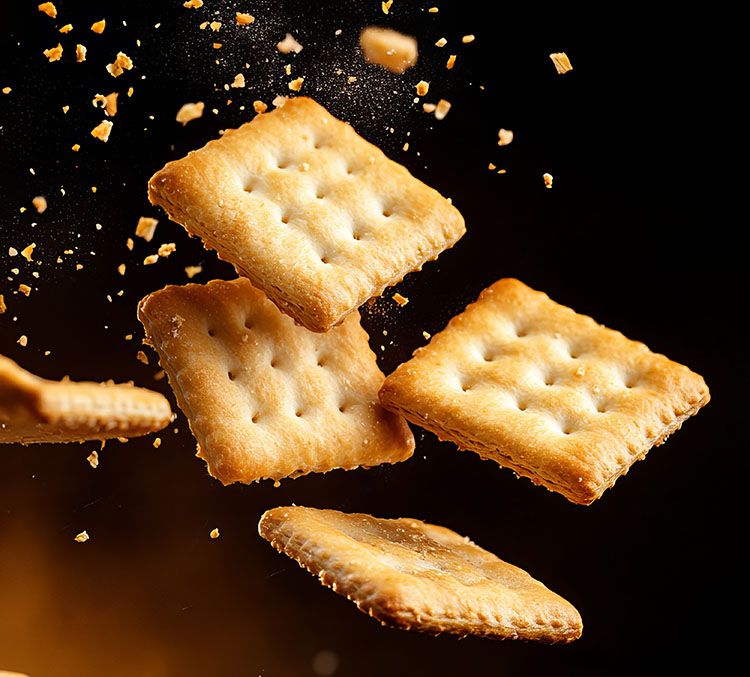
Two-stage mixing takes center stage
Two-stage batch mixing brings multiple advantages to industrial-scale baking. Two-stage batch mixing is especially suited to long-fermentation doughs, where structure and flavor are needed.
Two-stage batch mixing brings multiple advantages to industrial-scale baking. Two-stage batch mixing is especially suited to long-fermentation doughs, where structure and flavor are needed.
Chip Czulada embarked on a new role as the President of Reading Bakery Systems (RBS) at the beginning of 2024. He shares with Baking+Biscuit International magazine his view on the first six months at the helm of the company where he has been working for over 20 years.
An entire fleet of iconic crackers built its consumer base on their open, flaky texture, which is produced by layering the dough. Reading Bakery Systems designed a new, 90-degree technology concept for the laminators manufacturing this dough.
Fully automating kneading and mixing is an ambitious endeavor, given the complexity of the process, and the diversity of raw ingredients.
ECD will bring its thermal profiling technology to iba in October. The handheld M.O.L.E.™ EV6 sets a new benchmark for thermal data loggers, delivering instantaneous data access and intuitive control – now with a full-color touchscreen display. In addition to the six-channel M.O.L.E. EV6, the company’s BreadOMETER™, CakeOMETER™, and OvenBALANCER™ sensors will be demonstrated at the stand.
ECD’s M.O.L.E.™ EV6 touchscreen thermal profiler is now commercially available, with shipments starting April 1. The interface is said to have a user-friendly, intuitive design engineered to save baking professionals time, simplify data viewing and analysis, and improve productivity.
Technological developments make continuous mixing a better option than batch mixing, especially so for high-volume production. High throughput continuous mixers are becoming the best sellers in this equipment category.
Over the years, advances in continuous mixing have been developed to improve ingredient metering, process controls and include specialized mixer designs and ultra-high capacity mixers. Compared to batch mixing, such technological developments make continuous mixing a better option than batch mixing, especially so for high-volume production.
Automated continuous mixing delivers real-time process assessment and consistency round the clock.
Requirements stemming from the product characteristics, the manufacturing needs, the facility and equipment line-up will influence how continuous mixing and kneading should be set up.
A continuous kneading and mixing process ensures all types of ingredients are mixed and kneaded in the optimum sequence to produce the desired product with consistent characteristics while saving time, resources and minimizing waste.
To consistently produce high-quality pizza, especially at high speeds in industrial environments, all types of equipment on the production line must contribute.

